- Home
- H A CULLEY
The Concubine's Son
The Concubine's Son Read online
BABYLON
THE CONCUBINE’S SON
by
H A Culley
Part One of the Story of Hammurabi, the first Babylonian Emperor
First Kindle Edition 2014
Text copyright © 2014 H A Culley
The author asserts the moral right under the Copyright, Designs and Patents Act 1988 to be identified as the author of this work.
All Rights Reserved. This book may not be reproduced in any form, in whole or in part, without written permission from the author.
Cover design by Pete Zelewski. © Pete Zelewski
For James, Georgina and Charlotte
Other books by H A Culley
The Normans Series
The Bastard’s Crown
England in Anarchy
Caging the Lyon
Seeking Jerusalem
TABLE OF CONTENTS
Historical Note
List of Principal Characters
Chapter One – Throne of Blood - 1792 BCE
Chapter Two– Preparations – 1792 BCE
Chapter Three – The Hittite – 1791 BCE
Chapter Four – Eshnunna – 1789 BCE
Chapter Five – A New Alliance – 1789 BCE
Chapter Six - The Fall of Mari – 1788 BCE
Chapter Seven – In Search of Horses - 1788 – 1786 BCE
Chapter Eight – Diplomatic Interlude – 1786 to 1783 BCE
Chapter Nine – The Code of Hammurabi – 1783 to 1781 BCE
Chapter Ten – Conflict in the North – 1781 - 1779 BCE
Chapter Eleven – The Hunt for Zuuthusu – 1779 - 1778 BCE
Chapter Twelve – Tragedy Strikes – 1776 BCE
Chapter Thirteen – Vengeance – 1774 BCE
Chapter Fourteen – A Dangerous Game – 1772 BCE
Historical Note
This historical novel is set in ancient Mesopotamia at the time of the First Amorite Babylonian Dynasty in the second millennium BCE. At this time Mesopotamia, the land of the Tigris and Euphrates Rivers in what is now Iraq and part of Syria, was a land of city states. To put the period into a historical context, the Hittite Empire in modern day Turkey was in its infancy, Assyria in northern Mesopotamia was a third of the way through its two millennia existence and the classical civilisations of Greece and Rome lie about a millennium in the future. In Egypt, the other great civilisation of the time, the twelfth dynasty of pharaohs was coming to an end and the period known as the Middle Kingdom was about to descend into instability and chaos.
The name Babylon is a Greek corruption of the Akkadian Babili, meaning gate of the gods according to some sources. Others believe that it stems from Babel, which is mentioned in the Old Testament (as the Tower of Babel). The city’s origins are unclear, some scholars believing that it could date back as far as the twenty third century BCE. By 1900 BCE, nomadic tribesmen from the north west called Amorites had moved into Mesopotamia and ruled the land previously owned by Akkadian farmers.
The first Babylonian king was an Amorite chieftain named Su-abu who declared independence from Kazallu, another city state. However, Babylon controlled only a few other towns and a small part of the surrounding country until Su-Abu’s descendent, Sin-Muballit, came to the throne a century later. He brought three other city states under his rule. His son, Hammurabi, built on this when he succeeded him in 1792 BCE (Middle Chronology*). By the time he died in 1750 BCE Hammurabi had expanded his domain until he ruled over all the land between the Euphrates and the Tigris rivers from Mari in the north (modern Tell Hariri in Syria) to Ur of the Chaldees (birthplace of the Hebrew patriarch Abraham) and the northern shores of the Gulf in the south.
Hammurabi was undoubtedly a gifted commander and a cunning diplomat, but he is best known as a great administrator who developed the Code of Hammurabi, a set of two hundred and eighty two laws, each with a specified sanction. Two notable inclusions were the presumption of innocence until proven guilty and the right of both accuser and accused to present evidence to support their case. It also introduced the principle of an eye for an eye and a tooth for a tooth. Hammurabi’s code formed the basis for codes of law in many succeeding civilisations, including those of the Hittite Empire and the Hebrews.
Hammurabi died three thousand seven hundred years ago but, such was his reputation as a law giver, he is commemorated as such in the United States on friezes in both the House of Representatives and in the Supreme Court Building.
Although we know quite a lot about his achievements and his legacy to the world, little is known about his private life, or even the age at which he came to the throne. However, he ruled for forty three years so he cannot have been very old when he became king. For the purposes of the story I have assumed he was crowned at the age of sixteen and died when he was fifty nine, which was reasonably old for the time.
[*The Middle chronology is one chronology of the Near Eastern Bronze and Early Iron Ages. This chronology, or system of dating, is based on a 56/64 year astronomical calculation determined by evidence from the Venus tablet of Ammisaduqa. There are other chronologies which date Hammurabi’s accession as early as 1933 BCE and as late as 1696 BCE. I have used BCE (before common era) rather than BC (before Christ) as this seems to becoming more usual now, but the two terms are essentially interchangeable. ]
There are certain words and terms which might be unfamiliar to the reader. I list a few of these below:
Marduk – One of the main gods of the city of Babylon who grew in importance under Hammurabi’s rule until it became the head of the Babylonian pantheon.
Mesopotamia - Literally “the land between the rivers”, in this case the Rivers Euphrates and Tigris. This was part of the area known as the “Fertile Crescent” in the ancient world, which also included Assyria, Phoenicia and Syria on the Mediterranean coast, and the Nile valley in Egypt.
Onager – A member of the Equus family larger than a donkey but shorter legged than a horse; also called the Asiatic Wild Ass.
Shamash – The sun god and god of justice. The chief god of the city of Sippar.
Ziggurat - Man made mound like a flat topped pyramid on which shrines were built. They were usually massive in size and easily defensible.
List of Principal Characters
In order of appearance
Historical characters are shown in bold type and underlined
SIN-MUBALLIT – King of Babylon from 1811 BCE to 1792 BCE. Father of Zuuthusu and Hammurabi.
ZUUTHUSU – Son of Sin-Muballit and Nidintu.
NIDINTU – Wife of Sin-Muballit, Queen of Babylon,
HAMMURABI – Elder son of Sin-Muballit and Ashlatum, a concubine. King of Babylon from 1792 BCE to 1750 BCE.
BASHAA – Palace guard and friend of Hammurabi. Later captain of the palace guards.
ASHLATUM – Hammurabi’s mother.
ARISHAKA – Hammurabi’s younger brother.
HUMUSI – Hammurabi’s sister, later Queen of Eshnunna.
ETTU – Hammurabi’s younger sister.
NUTESH – Captain of the palace guards and a supporter of Zuuthusu.
ISIRATUU – Leader of the council of elders of Babylon, later chief minister.
ABI-MARAS – Isiratuu’s eldest son.
SIN-BEL-ALIM Governor of Kish, later foreign minister.
HUNZUU – Governor of Borsippa.
UHAR – Succeeded Nutesh as captain of the palace guards under Zuuthusu.
IBBI-ADDAD – Chief minister of Babylon.
RIHAT – Captain of the Babylon city watch under Hammurabi.
SHAMSHI-ADAD King of Assyria.
MANNUI-QIPI – High Priest of Marduk, chief deity of Babylon.
ABILISKU – Treasurer of Babylon.
KINAU – Succeeded Isiratuu as
chief elder of Babylon.
TARHUNDA – Hittite general who became commander of the Babylonian armies.
DADUSHA – King of Eshnunna.
ADIAR – Dadusha’s sister, later Queen of Babylon.
ISHME-DAGAN King of Ekallatum. Elder son of Shamshi-Adad.
YASMAH-ADDU Younger son of Shamshi-Adad.
SIWE-PALAR-HUPAK – King of Elam.
SAMUDITANA – Hammurabi’s eldest son.
ZIMRI-LIM – Eldest son of the King of Mari.
SUMU-EPUH – King of Yamhad.
YARIM-LIM – His son and successor as King of Yamhad.
SHIBTU – Daughter of Sumu-Epuh and sister of Yarim-Lim, later wife of Zimri-Lim.
SAMSU-ILUNA – Hammurabi’s son and eventual successor as King of Babylon.
MUTU-NAMAHA – Hammurabi’s youngest son.
RIM-SIM – King of Sumeria
IBAL-PI-EL – Brother of Dadusha, King of Eshnunna
Chapter One – Throne of Blood - 1792 BCE
In the bright moonlight the boy ran desperately through the reed beds that grew alongside the River Euphrates. Hammurabi could hear Zuuthusu yelling for his soldiers to find him before he escaped or he would flog them all. As he ran tears blurred his vision. The first he had known of his father’s death had been when his friend Bashaa, one of the palace guards, had woken him just before dawn to break the news. His father, King Sin-Muballit, had ruled the small city state of Babylon for the past nineteen years. At forty three he was still far from old and at first Hammurabi couldn’t believe that he was really dead.
‘How?’ he had asked. ‘How did he die?’
‘Murdered in his bed by Zuuthusu,’ Bashaa spat to show his disgust of one who would commit patricide. ‘No more time for talking. He will come for you next. You have to get out of here.’
Whilst Zuuthusu was Sin-Muballit’s eldest son and the only one born to him by his shrewish wife, Nidintu, he had always preferred Hammurabi, the eldest son of his favourite concubine, Ashlatum. The rivalry between Prince Zuuthusu and Hammurabi had existed as long as the latter could remember. It was always assumed that the prince would follow his father on the throne but there was no rule that stipulated this. Hammurabi was well aware that Zuuthusu was not popular, either amongst the city elders or the priests of Marduk, the most important deity of Babylon. The elders thought the prince was vain and too interested in acquiring wealth for himself instead of caring for the people. Furthermore, he had offended the priests by paying scant attention to the proper worship of Marduk - or any of the other gods come to that.
Matters had come to a head when Hammurabi reached the age of sixteen, a year before he would become a man in the eyes of the Babylonians. Rumours had circulated that the king was about to announce that he had chosen Hammurabi as his heir and this had obviously panicked Zuuthusu into taking action to ensure his own succession.
The boy realised that the reeds at this point were getting sparser and shorter than they had been further back along the river bank. He would soon be seen by his pursuers. He panicked, not knowing what to do. Then an idea came to him and he drew his bronze knife to cut and trim one of the reeds. He sank below the surface of the water in the last patch of the denser reeds and breathed through the thin tube with its tip an inch above the surface.
As he lay there, Hammurabi’s concerns turned to his mother, Ashlatum, and his siblings. His sisters were still living with their mother, as was his brother Arishaka, who was only six. Had Zuuthusu had them all killed? Then he remembered that his half-brother had told him during a particularly heated quarrel that he wanted Hammurabi to witness him killing his mother, so he took some comfort from the thought that, as long as he was free, his family might well be kept alive. This, coupled with his fervent desire for revenge on Zuuthusu for killing their father, enabled him to conquer the fear that had threatened to unman him and, moreover, it strengthened his resolve to survive.
He kept his eyes open and watched the distorted image of one of the palace guards standing in the shallow water nearer to the bank looking around for the tell-tale movement of the reeds to betray Hammurabi’s position. After a minute the soldier moved on but still Hammurabi didn’t move. Then, just when he was beginning to think it was safe to double back, away from the pursuit, another guard appeared in his field of vision. Unlike the first one, this soldier was searching the water and the reeds carefully, prodding with his spear every now and then. Suddenly the soldier saw the boy lying under the water and their eyes met. The man splashed through the water towards him, his spear levelled.
~#~
Ashlatum feared for Hammurabi’s safety. As soon as the king was murdered, palace guards loyal to Zuuthusu had come to the women’s quarters to arrest her and her children but the sentries at the entrance refused to let them enter, pointing out that only women and children were allowed inside. Whilst the argument between the two sets of guards raged, Ashlatum listened for a moment to learn what the commotion was all about, then quickly woke her children and they climbed out of a window into the king’s private gardens.
‘Where are we going, mother?’ Arishaka asked. The little boy was frightened by what was happening whilst enjoying the atmosphere of excitement and adventure. His sisters were just frightened.
‘We need to leave here and find somewhere new to live. Don’t worry, all will be well as soon as we find your brother. He has friends who will protect us.’ She prayed to Marduk that this was so. She knew that her elder son was popular, but she suspected that Zuuthusu had bribed the palace guards, or at least some of them, including the captain of the guards, Nutesh. She supposed that Sin-Muballit must be dead: why else would the palace be in such an uproar? For a moment she thought that the guards who weren’t privy to the coup might be able to arrest those responsible, then she realised that they would be leaderless.
The city garrison was led by men who favoured Hammurabi, but they wouldn’t be prepared for what was happening. Zuuthusu was his father’s eldest son and the logical heir in the absence of any decree from Sin-Muballit to the contrary. Zuuthusu had been clever: he had acted decisively and without warning. In the absence of any co-ordinated opposition, he was likely to be acknowledged as king, even though the priests and the elders disliked and distrusted him.
Gathering her children around her, she made her way to the gate out of the gardens. Normally there would have been a guard on this gate but in the confusion whoever was meant to be there had deserted his post. Ashlatum pulled back the wooden bolts and the small group slipped through, closing the gate behind them in the hope that it would look as if it was still locked. Now they were outside the palace in the lane lined by houses occupied by rich merchants and some of the elders.
Ashlatum had never been outside the palace since she was a young girl, but others had told her who lived in this lane. She felt that, if she could reach the house of Isiratuu, the senior elder, she and her family might be safe. The trouble was she didn’t know which house was his. She had just decided that she would have to knock on one of the gates and ask the porter for directions when she saw a man weaving his way drunkenly up the road. She had made up her mind to ask him about Isiratuu’s house when the main palace gates a few hundred yards further up the lane swung open and about twenty of the palace guards ran out and sped in the other direction, towards the river, urged on by Zuuthusu. She knew now that they sought Hammurabi and she offered up another prayer to Marduk for his safety.
The drunken stranger seemed bemused by all the commotion and when asked by Ashlatum for directions he indicated one of the houses somewhat distractedly, whilst continuing to stare in the direction that the palace guards had taken. Just then the palace erupted into sound: voices shouting and the clash of weapons could be heard quite clearly. Ashlatum found this mildly encouraging. It seemed that Zuuthusu wasn’t having things all his own way.
She knocked on the gate of Isiratuu’s house and told the porter to fetch his master, saying that it was a matter of life and death.
The man seemed to be away for ages and she became really concerned that they would be discovered. Just when she had decided to leave, the gate swung open to admit her and the children. She hoped fervently that Isiratuu would help her, but she was only too well aware that he could just as easily hand her and the children over to Zuuthusu to curry favour with the new regime.
~#~
The spearman thrust down at Hammurabi a split second after the boy made his move. The water slowed his movements, but he managed to get out of the way of the spear just in time. He scuttled to one side, water streaming from his body, as he got into a crouching position. The guard pulled back his spear for another thrust but, before he could do so, Hammurabi leaped up and grabbed the haft, pulling it towards him, then neatly side stepping the point. The guard was pulled off balance, despite his greater size and weight, and the boy thrust his knife into the man’s rotund belly.
This was an error as the wounded man screamed in pain before Hammurabi was able to pull his knife out and sever his windpipe to cut off the noise. But it was too late. Shouting erupted all around him in response to the man’s screams and he heard men moving towards the sound.
Hammurabi grabbed the man’s polished bronze helmet and leather cloak and dressed himself as a palace guard, albeit a somewhat diminutive one. The helmet was too big and kept slipping over his eyes but it might be enough of a disguise in the moonlight. He picked up the spear and started to move back toward Babylon. A few minutes later he came across two more guards and he yelled that Hammurabi was heading towards the city. They rushed off that way and the boy ran in the opposite direction. He was lucky and didn’t encounter any more men before he reached the road that led east towards Kish, one of Babylon’s vassal cities. Kish was governed by Sin-Bel-Aplim, a lifelong friend of his father, who had been governor there ever since Babylon had conquered it a decade before.

 The Wolf and the Raven
The Wolf and the Raven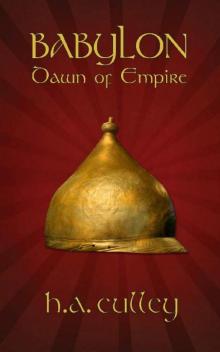 Dawn of Empire
Dawn of Empire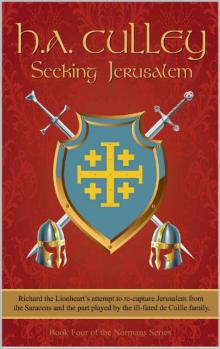 Seeking Jerusalem
Seeking Jerusalem The Strategos
The Strategos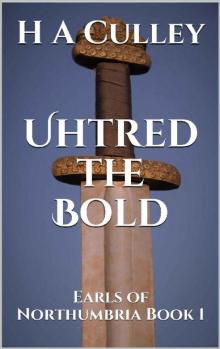 Uhtred the Bold
Uhtred the Bold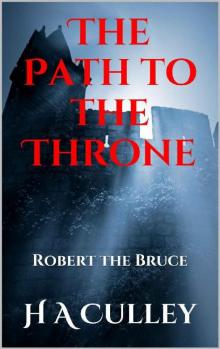 The Path to the Throne
The Path to the Throne The Bastard's Son
The Bastard's Son Alexander
Alexander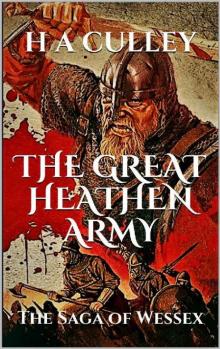 The Great Heathen Army
The Great Heathen Army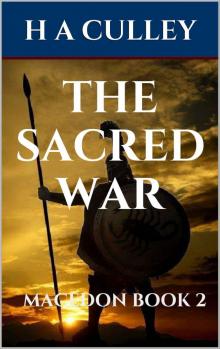 The Sacred War
The Sacred War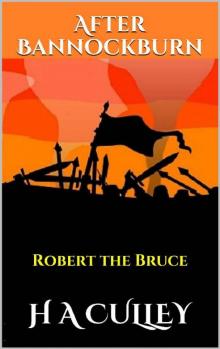 After Bannockburn
After Bannockburn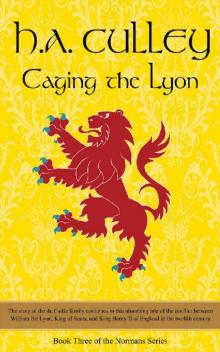 Caging the Lyon
Caging the Lyon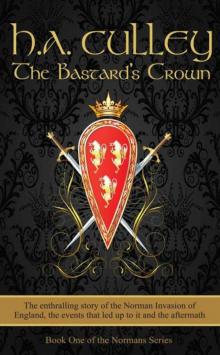 The Bastard's Crown
The Bastard's Crown WHITEBLADE
WHITEBLADE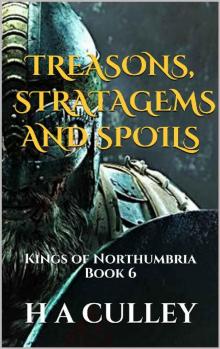 TREASONS, STRATAGEMS AND SPOILS: Kings of Northumbria Book 6
TREASONS, STRATAGEMS AND SPOILS: Kings of Northumbria Book 6 THE POWER AND THE GLORY: Kings of Northumbria Book 4
THE POWER AND THE GLORY: Kings of Northumbria Book 4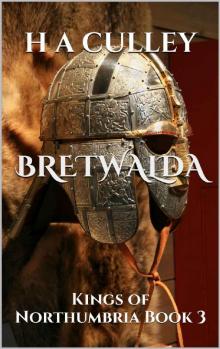 BRETWALDA: Kings of Northumbria Book 3
BRETWALDA: Kings of Northumbria Book 3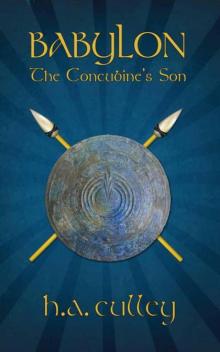 The Concubine's Son
The Concubine's Son The Fall of the House of Æthelfrith: Kings of Northumbria Book 5
The Fall of the House of Æthelfrith: Kings of Northumbria Book 5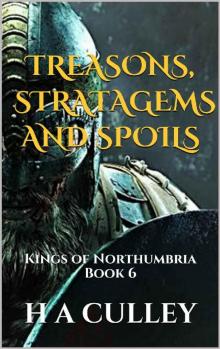 TREASONS, STRATAGEMS AND SPOILS
TREASONS, STRATAGEMS AND SPOILS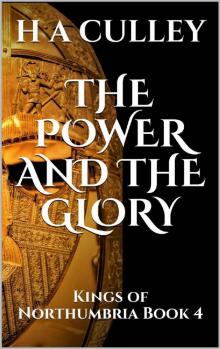 THE POWER AND THE GLORY
THE POWER AND THE GLORY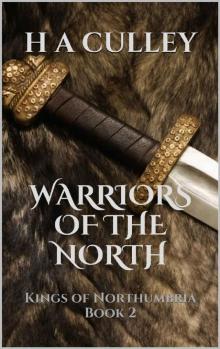 WARRIORS OF THE NORTH
WARRIORS OF THE NORTH The Fall of the House of Æthelfrith
The Fall of the House of Æthelfrith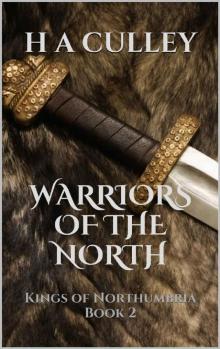 WARRIORS OF THE NORTH: Kings of Northumbria Book 2
WARRIORS OF THE NORTH: Kings of Northumbria Book 2 WHITEBLADE: Kings of Northumbria Book 1
WHITEBLADE: Kings of Northumbria Book 1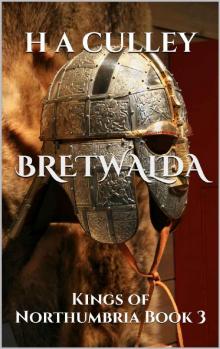 BRETWALDA
BRETWALDA